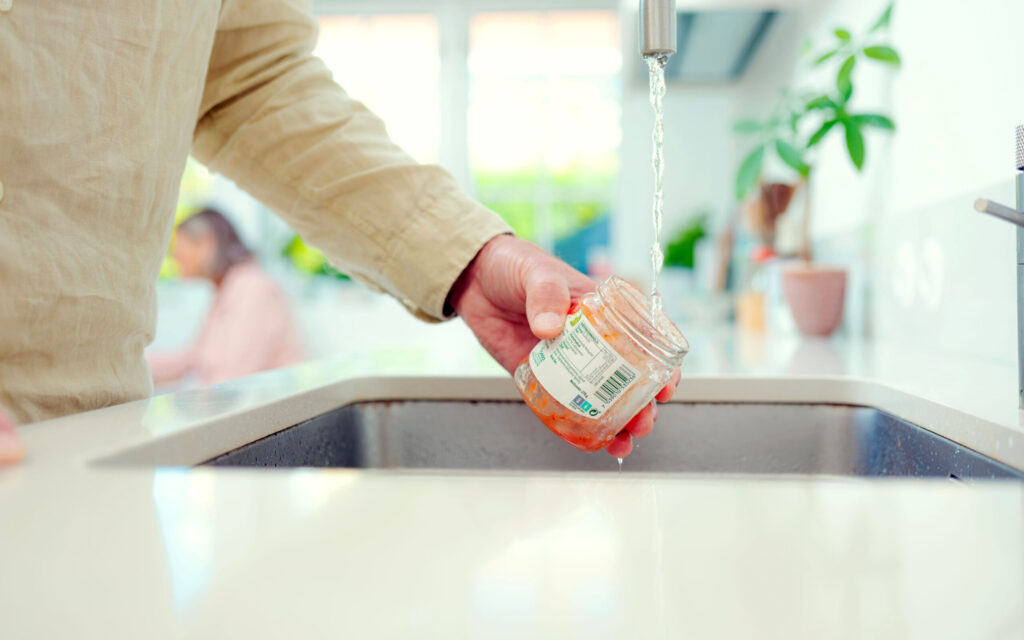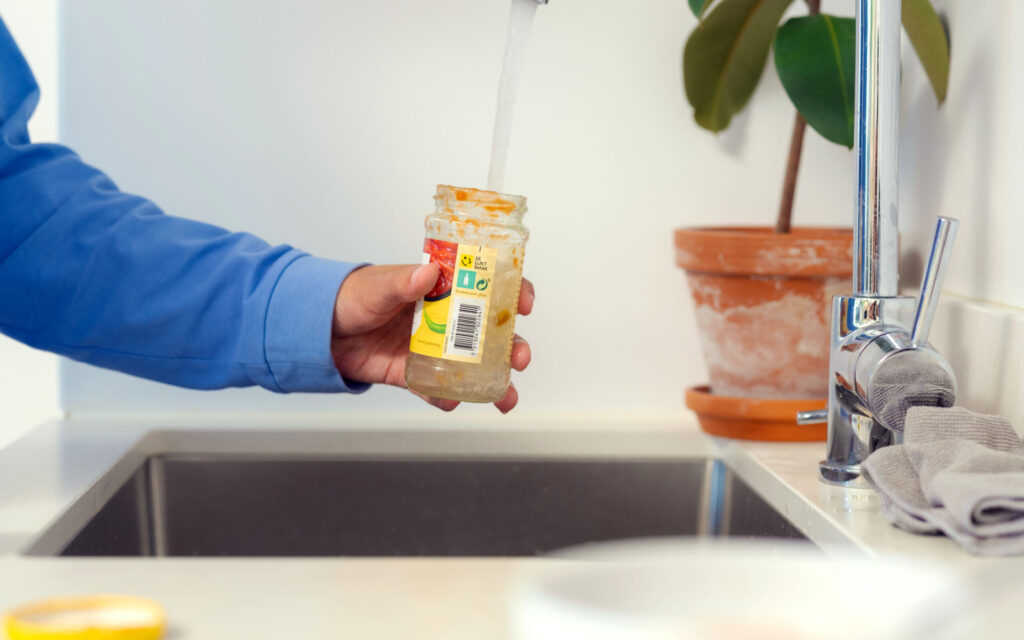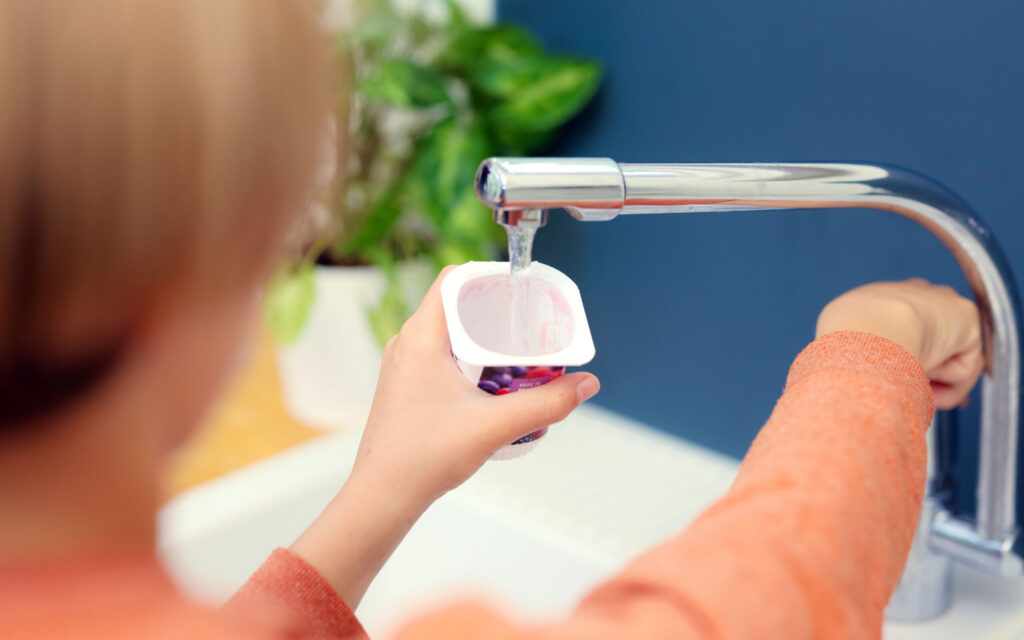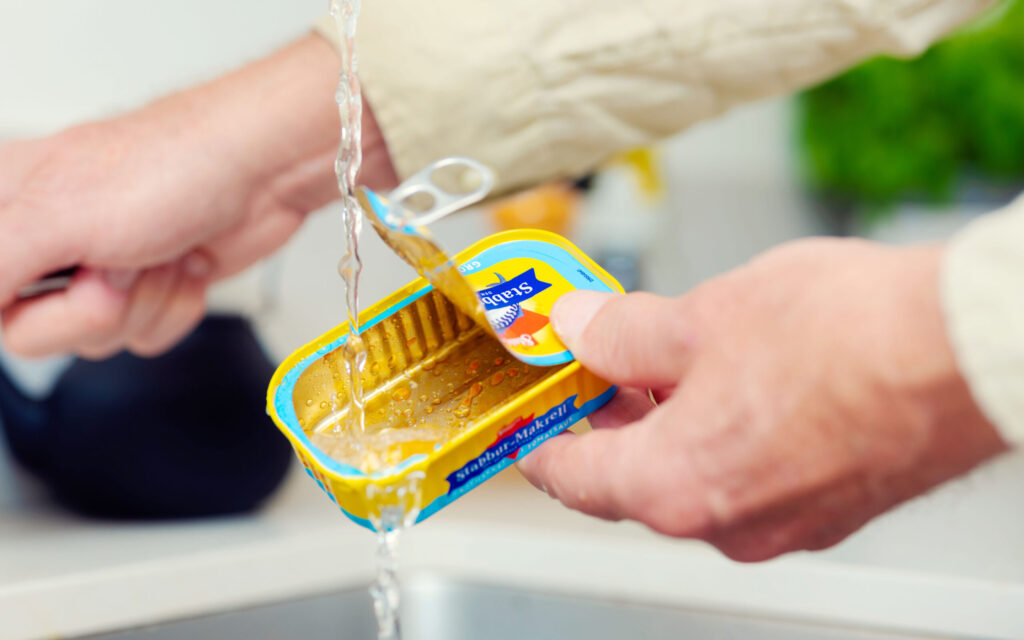When is the packaging clean enough?
Many people wonder about this. On this page, you will get the answer to what is meant by clean enough, and why it is so important that the packaging is clean before it is sorted. The simple rule of thumb is:
When the packaging is empty of leftovers, it is clean enough and ready to be sorted.

How to get the packaging clean enough
There is often little effort, sometimes nothing, needed for the packaging to be clean enough and ready to be sorted. The salami package, for example, is ready for sorting when it is empty, even if it is still a little greasy. You should rinse, shake and dry the jam jar or mackerel-in-tomato box before sorting. If necessary, take a swipe with the washing-up brush. If you have used napkins or paper towels, these can be used to remove the last food residue, thus avoiding sticky residue in the drain.
10 TIPS FOR CLEAN PACKAGING
- Remove as much food leftovers or product residue as possible. Squeeze, scrape, shake or squeeze out as much of the contents of the packaging as you can.
- Eat up your food. Remove any remaining food with used napkins or paper towels. You can throw these in the biowaste afterwards.
- Rinse with cold water if necessary.
- A thin layer of grease left in the packaging is perfectly fine.
- Use the lid. If the packaging has a lid, you can fill it half full with cold water and screw the lid on. Then you shake and empty out.
- Take a swipe with the washing-up brush if needed.
- Shake and lett drip dry. You do not need to dry the packaging, just shake and let the water drip off.
- If some food remains stick very well, you can try leaving the packaging in water for a while so that it dissolves. You can also reuse dishwater if you have washed the dishes by hand.
- Labels stuck to the packaging can be left on, but remove paper that is easy to remove. If there is a lot of paper on the plastic, the machines at the recycling plant will read the packaging as paper, and reject the product in the sorting process.
- If you have to use hot water or soap to get the packaging clean enough, it’s okay to throw it in the residual waste. It is more environmentally friendly to throw the packaging in the residual waste, where it can be turned into light and heat at the energy recovery facility at Returkraft.
.






Why is it important that the packaging is clean?
By using recycled packaging in new products, there is less energy required in production. When the packaging is clean enough, you are also confident that the waste can be recycled. In addition, you ensure that all the people who work with the waste, from the time it is collected from you until it is recycled, have a better working day.
- Better raw material that is easier to recycle. Packaging made from plastic, glass, metal, cardboard and paper is a raw material that we collect in order to recycle the material and give it new life. If the packaging is dirty, it is of poorer quality, which makes it more difficult to recycle and resell.
- Transport to the recycling facilities will be as environmentally efficient as possible. Even if environmentally friendly means of transport such as trains and return transport are used, it is not good for environmental accounting to transport food scraps and product scraps instead of just the packaging itself.
- Better working day for the people who take responsibility for your waste. It is important to remember that people work throughout the cycle. When you throw away the packaging, the journey has just begun. Your waste must be collected, unloaded, transported around the sorting facility and loaded for transport. Old food scraps make this job challenging, and also attract pests.
- Avoid odors in your home. For your own part, it is important that the packaging that has contained food is clean enough that it does not start to smell bad under the kitchen counter, in the laundry room or in the garage.
Try this!
Drag the caviar tube along the edge of the table to squeeze out the rest.
Put the ketchup bottle on its head to get the residue down against the cork.
Use some paper towels to remove the last food residue.
Sources – text, photo and film: LOOP/Sortere and Grønt Punkt Norge.
